I’ve been thinking. Historically, fluent Spanish-speaking communities held high expectations for the authenticity of Latino portrayals in cinema. Actors tasked with these roles were scrutinized closely, and those who delivered their lines in poor or… More
5 Tips For Work-From-Home Moms
For those of you who don’t already know, I work from home as a full time strategist for a non-profit organization. Working from home is great on so many levels. Not having to commute saves money, time, and according to science and the previously linked article, it actually makes you happier and hugely productive. Yet, just like every other good thing, working from home also has its many challenges. How do you keep from getting distracted with household duties? How do you handle getting too comfortable with beat up and stinky sweatpants? How do you get anything done if you have kids around? How do you maintain your sanity? Following are 5 tips on how I manage to make the best out of working from home.
1. Wake up early: I wake up at 5:50 am, roll out of bed, drink a large glass of water, and head to my 13 year old’s bedroom to get her ready for school. I help Faith get dressed, make her a quick breakfast, and get her out the door by 6:45. By 6:55 am, I’m changing into my gym attire, and leave for my morning workout to a park nearby.

I jog back home by 7:30, make myself a cup of Bustelo Supremo, jump into the shower (I have a thing for drinking my coffee in the shower—don’t ask, it is only an occasional occurrence), change, log on to my work laptop and read my emails. I wake Luna up at 9am. I do not reply to emails until after 10am, at which point, my work day begins.
Do I like waking up that early? Nope. Not at all, specially because I am a night owl and get all types of crazy creative late at night. Yet, it feels amazing to start the day on top of my inbox and ahead of the game, instead of watching my personal life and work pile up. It helps my stress level as well as my productivity. Waking up early also helps me open up my afternoons to whatever random events I may choose to subscribe to.
2. Get your baby on a schedule: This may be a tough one if you did not start your baby on a schedule from day one but if you plan to work from home, you must get to it. Besides, babies appreciate routines. One of the books I found highly helpful when it comes to learning about baby sleep routines was Moms on Call. There is even a Moms on Call scheduler App to help you get started with a schedule. The App is super easy to use and follow. I have also heard wonderful things about the book Baby Wise. Although I am yet to read it, people who have, speak wonders about its many tips on eating, playing, and sleep routines for babies. If you can get your baby on a schedule and stick to it, you are game!
3. Get dressed: it is so easy to lose the motivation to doll yourself up when you work from home since let’s be honest, who’s really watching? What co-worker are you really going to run into on your trip to the restroom and start discussing outfit details? Thing is, although pulling out that navy blazer, curling your ends, adding a statement necklace, and slipping into those suede pumps may seem unnecessary, you should really still make an effort. For yourself. Yes, while at home. Getting into the routine of doing my hair and minimal makeup as well as refuse to stay in my pjs and/or mismatched sweatsuits, is what helps me set the tone. It truly pumps up my mood! You don’t need to completely dress up, just pick something that makes you feel good. Work from home moms—ask yourself, if you left the house right now, as you are, would you be okay with bumping into a co-worker? If the answer is no, you may need to consider your work-from-home look.
4. Daily to do list: it can feel almost too natural to want to do house duties while you’re on the clock. To keep myself from getting distracted (read going nuts) with random home demands, I keep two active To-do lists (one personal and one work-related) throughout the week. I make my main (long) list on Sundays and then, as each day approaches, and based on their level of importance, I spread my tasks into daily to-do lists.  I make each day’s to-do list the night before and add to it the following morning as new tasks come up (ehemm after checking my email). I try to keep it short, 10 work tasks a-day and 5 home tasks. (You’ll be surprised at how much your efficiency level goes up once you narrow your focus.)
I make each day’s to-do list the night before and add to it the following morning as new tasks come up (ehemm after checking my email). I try to keep it short, 10 work tasks a-day and 5 home tasks. (You’ll be surprised at how much your efficiency level goes up once you narrow your focus.)
I also always keep my planner updated. I keep both an updated at-a-glance, and monthly calendar and update my weekly schedule every Sunday night.

5. Comfortable and organized home office: having an office where I enjoy doing work is as imperative to my peace of mind as it is to my productivity. I like to keep things organized, and at my reach. I also make the strongest effort to buy myself flowers regularly to keep by my desk because—visuals. Finally, I like to keep my desk as clear and as clutter free as possible. (Something that cannot be said about the rest of my house but hey—I try.) I also like to have things that inspire me at my view. Prints of things and people that I look up to, quotes, plants, anything that presents a reminder of how I can, and should get stuff done.

I try to avoid distractions at all cause. I do not keep family photos in my home workspace, and only keep supplies that I need on a daily basis at my reach. Items used a couple of times a week go in a drawer under my desk and in a separate container on one of my shelves.
Getting up even just once a day for a pencil or paper clip can shut your brain and completely distract you off of a project you may be working on, potentially setting you back in a way that you will have to come back and re-center. Ain’t no body got time for that.
“According to surveys, the average person loses an hour a day to disorganization. It takes much less time to get and stay organized. Think about how frantic and stressed you are when you can’t find something.” Amy Trager, a professional organizer in Chicago.
I hope you enjoyed reading.
Until next time,
O




5 Latino Films You Should Watch With Your Mujercita(s)
 Films that remind us of (and place emphasis on) our culture are a great way to spend quality time with our mujercitas (girls/women/daughters) as well as a fabulous way to encourage discussion around traditions. Whether you are a Latino parent raising children in the U.S. (of) A, or a non-Latino parent interested in teaching your children about cultures outside of their own, following are cinco (five) films that will generate discussion about Latino culture.
Films that remind us of (and place emphasis on) our culture are a great way to spend quality time with our mujercitas (girls/women/daughters) as well as a fabulous way to encourage discussion around traditions. Whether you are a Latino parent raising children in the U.S. (of) A, or a non-Latino parent interested in teaching your children about cultures outside of their own, following are cinco (five) films that will generate discussion about Latino culture.
After the film, you may consider asking your kids the following questions:
- Characters What did you think about the characters? Did they seem real and relatable? Do you think they’re based on stereotypes? Do you think they resemble our community (your school, your after-school program, your friends)?
- Story What did you think about the story (plot)? Do you think it relates to real life? Do you know about stories like this?
- Actors Did you like how the actors performed? Do you think that’s how you would go about expressing yourself? What part/act stood out to you the most?
- Message What would you say are the positive or negative messages in the movie? What would you change or add to it? How did you feel while watching the movie? How do you feel about the way it ended? What would you change and why?
Uno— COCO (2017) 1 hr. 49 mins

Stunningly animated, poignant tribute to family and culture, Coco is all about exploring traditions and the power of unconditional love.Centered around an aspiring musician boy named Miguel (voiced by Anthony Gonzalez), a young boy who ends up in the Land of the Dead and is confronted with his family’s ancestral ban on music, the movie— which features an all-star Latino voice cast (including Gael García Bernal and Benjamin Bratt, as well as a Latino co-director and many Latino crew members— is a tribute to Mexican traditions and customs.
Themes worth noting and discussing:
- Gratitude and perseverance
- Dia de los muertos
- Following your dreams
- Holidays and Traditions
TALK TO YOUR KIDS ABOUT…
- What does Miguel learn in Coco? How do his experiences in the Land of the Dead help him grow?
- Did you already know about the Day of the Dead? If not, what did you learn about the holiday?
- How does your family pay tribute to relatives and loved ones after they’ve passed away? Which other Mexican traditions and values does the movie depict?
- Did you notice that characters speak both English and Spanish in the movie? Would you like to learn a second language?
- For bilingual families: Why do you think it’s important or useful to speak two languages? How does language connect you with your heritage, and your family?
Dos—Under the Same Moon/ Bajo /La Misma Luna (2007) 1 hr. 49 mins.

Storyline: UNDER THE SAME MOON tells the parallel stories of nine-year-old Carlitos and his mother, Rosario. In the hopes of providing a better life for her son, Rosario works illegally in the U.S. while her mother cares for Carlitos back in Mexico. Unexpected circumstances drive both Rosario and Carlitos to embark on their own journeys in a desperate attempt to reunite. Along the way, mother and son face challenges and obstacles but never lose hope that they will one day be together again.
*Parents need to know that this drama has some mature and emotionally difficult themes. It revolves around a young boy who must deal with his grandmother’s (peaceful) death and an illegal border crossing between Mexico and the United States.
REVIEW: “This movie presents illegal immigration as a human issue and not as a political issue. There are various scenarios in which the viewer can witness the dangers, sufferings and struggles that illegal immigrants and their families faced on a daily basis. It provides an insight into the lives of thousands of people whose families are divided because of this situation.” -Amazon reviewer
Themes worth noting and discussing:
- Immigration
- Effects of separation because of immigration
- Border crossing
- Bond between mother and son
- Race and identity
- Physical and [psychological borders
- Courage and love without borders
- Hope and faith
TALK TO YOUR KIDS ABOUT…
- How the movie portrays the plight of illegal immigrants in the United States.
- Do you think the movie is trying to make a specific point about the issue?
- If so, what is it?
- How would you feel if you couldn’t see your family because of a wall/a border?
- What do you think should be done about it?
Tres— Real Women Have Curves(2002) 1 hr. 33 mins.

Storyline In REAL WOMEN HAVE CURVES, Ana Garcia (America Ferrera), the youngest daughter of an L.A. Mexican-American family, has just graduated from Beverly Hills High School and wants to go to Columbia University and date the sweet but dorky Jimmy. But her mother, Carmen (Lupe Ontiveros), is determined to marry Ana off, have a grandchild, and install Ana at the local sweatshop so she can finally retire. Ana clashes with her traditional mom, at her mother’s insistence that she lose weight to meet a boy. “How dare anyone tell me what I should look like or how I should be when there’s so much more to me than just my weight,” Ana announces. When Ana storms out of the sweatshop, Carmen races after her and collapses. “Are you embarrassed of me?”
WHAT’S THE SCOOP? Real Women Have Curves is a great addition to the pantheon of teen heroine movies. This film encourages young girls to follow their dreams. Like the warmly human Quinceañera, it also shows a teenage girl who unlike other popular films of the like—Mean Girls, Pretty in Pink, All or Nothing, or Easy A— shows a teenage girl who does not come from a white and affluent family and is not spoiled. Ana’s teen angst has a profound purpose. She’s trying to learn to love herself in a world where the dresses she irons are for people far smaller than she is.
Themes worth noting and discussing:
- Emphasis on class and race
- Body image
- Ana loses her virginity to her boyfriend
- Although nothing racy, there is some nudity
- Family values vs personal values – contraception, education, etc.
- Environmental factors where poverty makes it very difficult to succeed
TALK TO YOUR KIDS ABOUT …
- How body image is shaped by film and magazines.
- How do you feel about how you look?
- Do you feel pressure to look a certain way? Where does that pressure come from?
- How can teens learn to appreciate themselves for who they are?
- How does Ana demonstrate integrity?
Cuatro—Selena(1997) 2 hrs. 8 mins.

Storyline: Based on the life of Selena, killed in 1995, kids may ask questions about the events surrounding her murder. It isn’t shown, but one character does hold a gun to her own head. A character says “s–t” and “damn” in frustration. Non-Latinos are referred to as “gringos” in a few scenes. For aspiring musicians, this movie shows the amount of work, dedication, and perseverance it took Selena and her family to find success. This movie also shows the sexist and racist attitudes Selena had to transcend as a Mexican-American female lead vocalist.
WHAT’S THE SCOOP? SELENA, a touching, effervescent, and ultimately tragic biopic, tells the story of the Grammy-winning Tejano singer Selena, who was killed at age 23 by her fan-club president. The movie chronicles the performer’s rise to stardom and explores her relationship with her tight-knit family, including a domineering yet loving father, Abraham (Edward James Olmos).
TALK TO YOUR KIDS ABOUT …
- The relationship between Selena and her father. Why is he so authoritarian? Does he deny his kids a childhood by forcing them to perform?
- Selena’s father is shown lamenting the difficulties of Mexican-Americans in having to prove that they’re as American as any other American but also as Mexican as any other Mexican. Do you think this sentiment reflects the difficulties of other Mexican-Americans or immigrant families?
- How do you think the movie depict Selena as a role model through her personality, ventures in music and fashion?
- What challenges did Selena face as a female or as a Latina?
Themes worth noting and discussing:
- Gender and ethnic roles in the music industry
- Which Selena song do you know/love?
- Parenting roles and styles
- Authoritarian parenting
- Selena as an entrepreneur
Cinco— El Norte(1983) 2hr. 21 mins

Storyline—”El Norte” tells the story of a Guatemalan brother and sister who fled persecution at home and journeyed north the length of Mexico with a dream of finding a new home in the United States. Released during a time, then as now, when the California economy could not function without their invisible presence as cheap labor. “El Norte” tells their story with astonishing visual beauty, unashamed melodrama, and anger leavened by hope.
REVIEW: “What a beautiful, powerful and endearing film that Gregory Nava has given the general film watching public. While few people have ever seen this film, it rates as one of the best films ever in regards to Latin American cinema. Sure, the budgetary constraints can be seen in many parts of this film, but the overall artistic stamp of the film more than makes up for the lack thereof. In our current society of anti-immigration, one has to experience the pain and torment some of the people have to experience just to get the chance to live in America. This spirit alone gives me respect for most working immigrants, even if some are illegal. Even 20 years from now, Latin American film courses will still use this film as one of its finest examples.”
Themes worth noting and discussing:
- Magical realism
- Indigenous view and bigotry
- Ethnic and political persecution
- Guatemalan civil war
- Mayans
- Guatemalan Exodus
- Belonging and identity
The drama features Zaide Silvia Gutiérrez and David Villalpando, in their first film roles, as two indigenous youths who flee Guatemala in the early 1980s due to the ethnic and political persecution of the Guatemalan Civil War. They head north and travel through Mexico to the United States, arriving in Los Angeles, California, after an arduous journey.
Por: Orfa Torres Fermin
The Day Before Christmas in El Salvador
I love this time of year, particularly because of Christmas. It is the one North American holiday whose feel and spirit coincides with that of Navidad back in my motherland. As a second generation immigrant, who has naturally adjusted to the U.S., I still miss many things about my motherland. I particularly long for Noche Buena (Christmas Eve) as celebrated in the good old Salvadorian fashion. ![fbf66fa239376989554020bf3534ce8c[1]](https://raisingmujeres.wordpress.com/wp-content/uploads/2017/12/fbf66fa239376989554020bf3534ce8c1.jpeg?w=259&h=213)
I came to this country as a fourth grader. As a child, I had no trouble adapting and although I was homesick for quite a while, missed my grandmother (who raised me) dearly, and cried myself to sleep for months (more of that on another post), I quickly embraced my new home. Yet, although I claim Massachusetts as my home, El Salvador will forever hold that place in my heart reserved to mothers. Naturally, whenever this time of year comes by, I can’t help but feel a sense of overwhelming melancholy.
ABOUT CHRISTMAS IN EL SALVADOR
Christmas in El Salvador is the biggest event of the year, one of the most festive Christian holidays in many countries around the world since it celebrates Jesus’ birth. Since a majority of the population is Roman Catholic, and a sizeable group is Protestant, Christmas is celebrated by a majority of people across El Salvador.
I talk to my girls about Christmas back home all the time. (Particularly Christmas Eve.) Faith knows that for the longest time I thought Christmas was on the 24th and not the 25th, since that’s when everything seemed to take place back in El Salvador. I’ve told her all about the way in which all the kids in the neighborhood looked forward to “cuetes y estrellitas” (firecrackers and sparklers). She knows about the importance my grandparents placed on visiting family and friends on Noche Buena (Christmas Eve), and all the food that was had. As a kid, I looked forward to the day before Christmas more than I did the actual Christmas day since that’s when all the fun took place.
December 24th
The rounds typically started at 6pm on Christmas Eve and went on until 1am Christmas day. If Catholic, your day typically started by attending mass together with family. If hosting, you went home soon after service to welcome family and friends to your Noche Buena (Christmas Eve) feast.
After dinner, families gathered outside to light fireworks and play with sparklers. Small towns usually included music and dancing as part of the festivities. Homes were decorated with Christmas trees and nativity scenes that included the three wise men–special figures in Spanish cultures.
FOOD
The memory that always replays around this time of year is 7-year old me looking forward to wearing a ruffled white and red dress made just for me by my grandmother. This dress was typically made from carefully selected fabrics that I had hand picked a few months prior (a classic scene sure to repeat itself on special occasions). We then went off from home to home to family and friends. Every home we visited had pan con pollo (traditional Christmas chicken sandwich). We ate at every home we stopped by because it was considered rude not to do so.
In addition to pan con pollo, a traditional Christmas Eve menu included arroz con vegetales (rice with vegetables), tamal de pollo o puerco (chicken or pork tamales), tortillas y carne, followed by sweets. Typically composed of empanadas de platanos (plantain empanadas), pan dulce (sweet bread), quesadilla, café, chocolate caliente (hot chocolate), a variety of gaseosa (soda), and so much more.
The taste of panes con pollo is something that regardless of how much I try to replicate, I can never get them to taste as good as the ones my abuelita made. (I like to think that every generation says the same about the former.) But I will continue to try because they are THAT important to my very own Christmas family gatherings. (The ones I make sure to every year on Christmas Eve put together because–community.)

I talk to my girls about the traditional way in which Christmas is celebrated back in their mama’s motherland because even though they will never get to experience it full-on, at least not in the same fashion as I did, being born in this country and being mainly exposed to the North American way of living and celebrating should not get to rob them from feeling and understanding the way we, Salvadoreans celebrate.
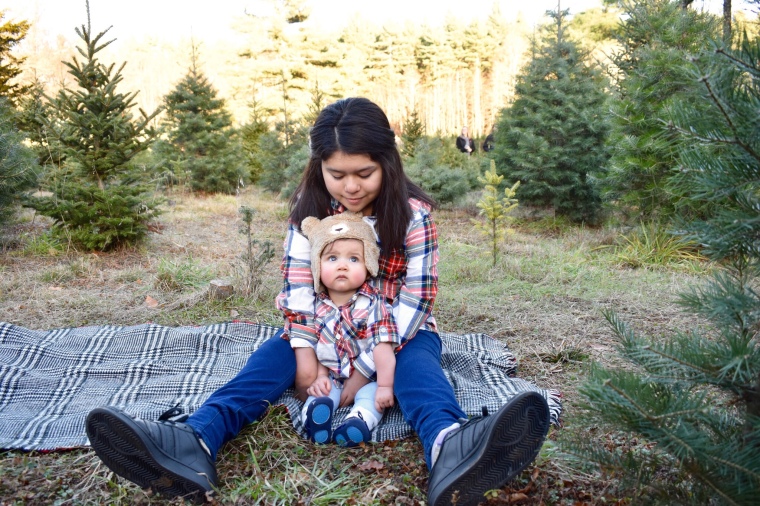
FUN
Much may have changed since the last time I spent Christmas back in my motherland (mid 90s). Nonetheless Navidad, as I recall, was never about the presents or tree. Christmas was about being thankful for our lives and that of our family and friends. It was about spending time with family, sharing jokes, and telling stories while sitting by bonfires with colorful fireworks blasting all through the skies.
It was about staying up very late on Christmas Eve because company was good, jokes were actually funny, and stories too interesting to miss. It meant walking from one neighbor’s home to another because we all knew each other and treated each other like family. Christmas meant community.
I cherish my childhood traditions and memories. I also cherish the traditions I have been practicing for over two decades living in New England. I never want my daughters to feel like they have to choose between one culture or the other. I also never want them to forget or neglect that very special part of them to which they are not regularly exposed to.


Sharing, incorporating, and speaking about my Salvadorean heritage with my daughters is important to me because I am a huge believer of, in order to understand yourself and achieve a strong sense of identity and belonging, you must first understand your roots. The country whose soil I first stepped on, the people that I grew up with, the stories I grew up listening to and believing, the food I tend to lean towards, make me, as much as it makes them–my daughters.

The way my Salvadorean people celebrate. The manner in which they come together. The way they share whatever little they have, the greatness of their kind heart and hardworking nature, as well as the strength in their soft spoken voice, is something that I will continue to be proud of and pass along to my mujercitas.

The Power of Literature
I believe in the power of literature. One of the things I have consistently instilled in my children (born of my womb and off of my friends’ and relatives) is the importance of reading regularly and being intentional about their literature intake. Reading, they have often heard me say, has the power to open waves of opportunities. Reading gives us the tools to think critically and imagine without boundaries. Reading, I’ve often stressed, connects us to things, places, and people to which or whom we don’t always have access to or are out of or tangible reach. Reading teaches us to think freely, creatively, critically, and without borders. Reading, has the power to make or break.
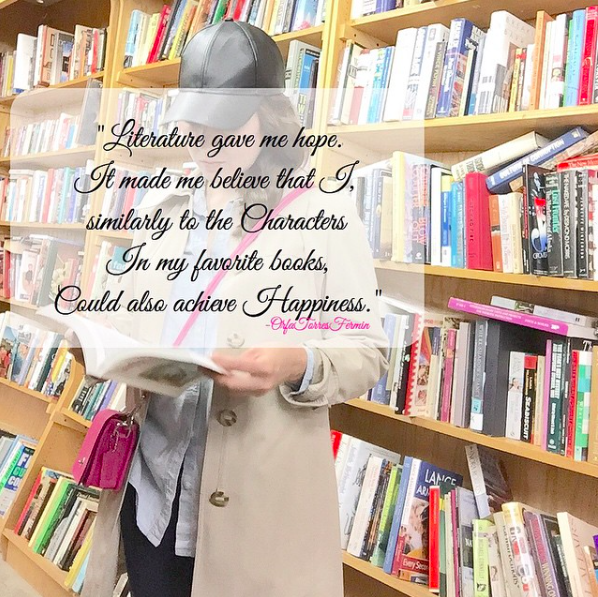
Reading, saved me. ///
Literature is essential to a child’s development and also an affordable investment towards their future.
Mi amor por la literatura—my love for literature—was a life saver. Literature was one of those tools that I, time after time, referred and referenced to. Whenever I was feeling down, whenever I needed to vent or simply escape my reality. Whenever I needed to write an apology letter, an essay, or resume, or whenever in need to put my feelings into words, literature—time and time again—provided an answer.
There are far too many benefits to reading. Reading promotes mental stimulation, knowledge, vocabulary expansion, memory improvement, strong analytical thinking as well as focus and concentration, stress reduction, and better writing skills. Reading by all means, provides the greatest form of free entertainment.
As far as better writing skills and retention are concerned, reading goes hand-in-hand with the expansion of your vocabulary: exposure to published, well-written work has a noted effect on one’s own writing, as observing the cadence, fluidity, and writing styles of other authors will invariably influence your own work. In the same way that musicians influence one another, and painters use techniques established by previous masters, so do writers learn how to craft prose by reading the works of others.
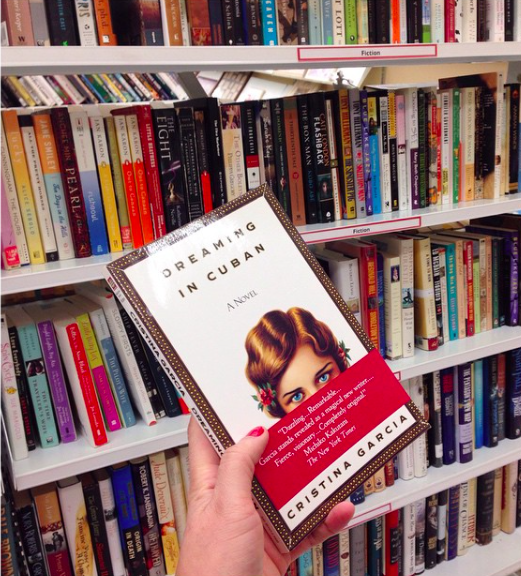
Reading, I swear to you, saved me. Reading, can also help raise better citizens.
There’s a reading genre for every literate person in this planet. Whether your taste lies in latino literature, poetry, fashion magazines, biographies, religious texts, young adult books, self-help guides, cultural texts, street lit, or romance novels, there’s something out there to capture everyone’s curiosity and imagination.

The sooner you introduce your tike to the wonderful world of literature, the sooner they will learn to appreciate it. Step away from your computer for a little, crack open the spine of a book, and replenish your soul for a little while. Something within you will appreciate it, your kids will follow your example, and you will learn and live a plenty.

Following are just a few books currently rotating on my teen girl’s bookshelves.
(photos)
These are just a few rotting on my bookshelf:
(photos)
And the books currently on rotation on my six month old baby’s bookself.
(photos)
Mis Libros, Your Libros, Our Books
I enjoy reading Latino literature. What I mean by Latino literature is not necessarily Spanish written text but rather English written text by Latino authors. Every time I am confronted by the reality that my local Barnes & Noble has not but a 5×4 rack of “Libros en Español,” I can’t help but think back to Spanish-only speaking, Spanish-thinking me. At eleven years old, newly arrived immigrant child, I knew not a word in English but owned a solid 8,800 word Spanish vocabulary.
Although eager to learn the English language, and quickly introduced to it by my school system, reading something I understood or related to in the process would have been a helpful transition. If not Spanish literature, reading English books with characters that looked like me would have helped lessened the all-too-common outcast feeling shared by many immigrant children.
The lack of Spanish literature in a country with over 54 million Latinos is troubling. Out of approximately 3,500 children’s books published in 2015, only 93 featured black characters. The numbers were no better for Latinos, Asians, and American Indians. These numbers are abysmal if you ask me for they are not representative of the country’s population. It is clear, the publishing industry, similarly to the film and TV industry, has a long way to go when it comes to fostering and promoting diversity.
The problem lies not only on finding books in Spanish but also on finding books that represent a broader culture. Books that Spanish-speaking children can relate to not just because these are in Spanish but because the characters in these books look like them or sound like them.
 Finding relatable children’s books shouldn’t have to be a challenge. Yet as Lori Tharps, an African-American journalism professor and mother of three bicultural children states, it is, because they’re not there. “I’m not trying to make my kids read about slaves all the time.” She says, “a black wizard story would be nice. Flat Stanley could be Asian or Latino.” These books are not there not because they don’t exist but because many schools choose not to include these books in their teachings. They are not there. Not because there are no good Latino authors writing rich-in-culture, unique and artistic books, but because bookstores as well as schools continue to shy away from displaying these to the public and fail to consistently include them in their curriculums.
Finding relatable children’s books shouldn’t have to be a challenge. Yet as Lori Tharps, an African-American journalism professor and mother of three bicultural children states, it is, because they’re not there. “I’m not trying to make my kids read about slaves all the time.” She says, “a black wizard story would be nice. Flat Stanley could be Asian or Latino.” These books are not there not because they don’t exist but because many schools choose not to include these books in their teachings. They are not there. Not because there are no good Latino authors writing rich-in-culture, unique and artistic books, but because bookstores as well as schools continue to shy away from displaying these to the public and fail to consistently include them in their curriculums.
So, why exactly is is so hard to find books about diverse characters on our local bookstores? According to publishers, children’s books about diverse characters don’t sell. I wonder, how can there be a demand for diverse characters when the books that feature characters of color are not given the same promotional push by publishers as that given to books with white characters? How can there be a demand for diverse character books when the books that feature characters of color are shoved into the multicultural sections and not placed amongst the rest of children’s literature? As Lucia Gonzalez, the author of The Bossy Gallito further explains, “Quality children’s books have been published for decades, especially since the ‘90s boom. The problem is a lack of visibility. These award-winning titles unfortunately…just don’t get into the mainstream market. Instead of being displayed with the ‘regular’ books, they’re set apart.”
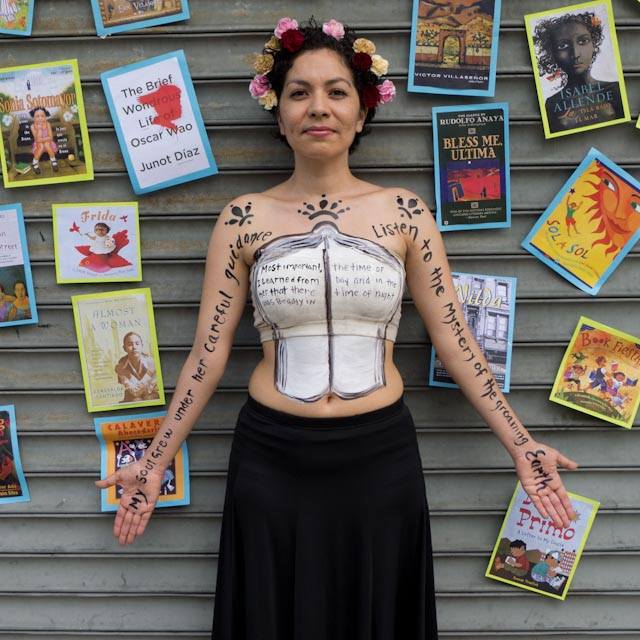
The second reason why bookstores don’t generally carry books about diverse characters is because children’s book editors are predominantly white. According to Robin Adelson, the executive director of the Children’s Book Council, “publishing houses are run by white men. Hiring a diverse array of people would help reflect the different children we’re publishing for.” Adelson continues, “If editors are not cultivating relationships with writers of different backgrounds, then it makes it difficult for writers in a vacuum to do something with commercial sensibility.”
What does this mean to Latino literature? How does the lack of non-white editors affect the book industry? The lack of diversity in the publishing workforce can, in part, be attributed for the disconnect between publishing houses and the gap in children’s literature. The publishing industry’s inability to host a diverse environment, more ethnic editors for instance, speaks volumes of their scarce desire to understand cultures outside their own.
How exactly are we to expect publishing houses to publish more books representative of the nation’s many cultures, or to recognize these cultures’ need to be represented, when they are unable to hire people illustrative of these?
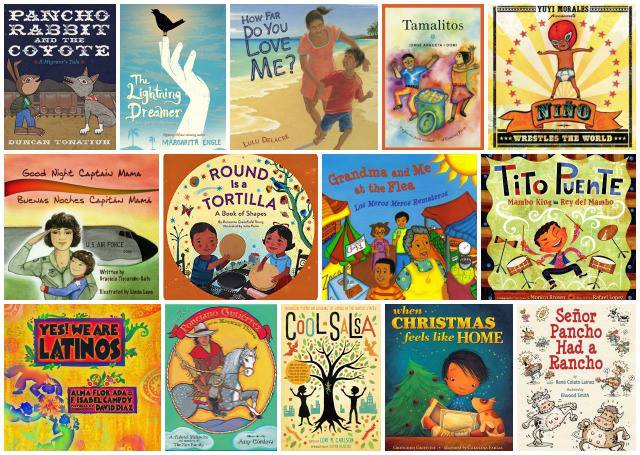
In hiring more diverse people, publishing houses would not only benefit proficiently, but also financially—particularly in a country that in 25 years will be evenly split between whites and non-whites. Minorities for instance, are the majority in six of the eight largest metropolitan areas of the United States. The combined Black, Hispanic and Asian buying power is more than $750 billion[1].
Publishing houses need to step up their game, get with the program, and employ more diverse individuals that can help promote and produce an array of diverse literature. If you ask me, producing more ethnic-centered literature is as profitable to us “the Other,” as it is to them, the big publishing houses. As markets expand, being able to understand and reach out to the individual needs of people from other cultures will be paramount. A multicultural, talented, and trained employee-base gives companies a key advantage. A multicultural curriculum gives children from diverse backgrounds not only a strong sense of belonging but also a stronger sense of self.

Now, let’s get back to where we started, why is it important for more diverse literature to be incorporated into our children’s classrooms? Why is diverse literature essential to our children’s learning? Why is the lack of diversity in our children’s reading lists a problem?
The lack of diverse (nonwhite characters and plots) Literature in the classrooms is problematic. Not only for the children belonging to said apartheid literature group but also for the children outside these groups. Children who are not generally exposed to cultures (customs, values, religion, music) outside their own are less likely to relate to other cultures. It is (often) this lack of understanding what leads to lack of cultural empathy and can potentially influence division. Lori Tharps further illustrates this notion, “Books often give us our first glimpse of how other people experience the world. How do we expect white kids to understand the lives of Asian, Latino, African, and Indian kids if everything they read is about kids who look and sound like them? The way things stand now, this is a lose-lose situation for everyone.” Books can help bridge cultural gaps because it has the power to provide an understanding of cultures outside our own.
Literature connects people. Literature has the power to enrich life and provide readers with a strong sense of belonging. People feel a particular connection when they read books whose characters, themes, maxims, ideologies, and languages are representative of who they are. Readers feel like outsiders when these images are missing and the dominant characters, values, and language are not representative of them—their families, their neighborhoods, their journey, themselves. I ask you, have you looked into your child’s reading list? Are you familiar with the characters illustrated in the books they read? How representative are these of your child? How representative are these of the space to which your child belongs—their communities?
Something to think about…
As the Latino community continues to grow, it will be interesting to see the speed in which Latino Literature is published, the manner in which these books are marketed, and consequently, the buying market’s response. It will also be interesting to see the effect that having more Latina/o literature has on Latino students in elementary schools (and universities), as well as the way in which its availability affects the identity and sense of belonging of Latino-American children—and young adults—who seldom see themselves in present day short stories and novels. //
UP NEXT…
I will be writing a Children’s Books with Latino Characters recommendations blog post. Stay tuned.
Sources cited: [1] Dr.Edward E. Hubbard, author of MeasuringDiversity Results and How to Calculate Diversity Return on Investment










![2cbb5db3447bfc424c8dfeff7418bbcc[1] Pan de pollo](https://i0.wp.com/raisingmujeres.wordpress.com/wp-content/uploads/2017/12/2cbb5db3447bfc424c8dfeff7418bbcc1.jpg?w=453&h=340&ssl=1)
![Tamales[1] Tamales[1]](https://i0.wp.com/raisingmujeres.wordpress.com/wp-content/uploads/2017/12/tamales1.jpg?w=299&h=168&ssl=1)
![maxresdefault[1] maxresdefault[1]](https://i0.wp.com/raisingmujeres.wordpress.com/wp-content/uploads/2017/12/maxresdefault1.jpg?w=299&h=168&ssl=1)
![BJG_9067[1] Quesadilla](https://i0.wp.com/raisingmujeres.wordpress.com/wp-content/uploads/2017/12/bjg_90671.jpg?w=365&h=548&ssl=1)
![ceeef90e51d0c1bde3d7e5e0b7528fb8[1] Inside of an empanada de platano](https://i0.wp.com/raisingmujeres.wordpress.com/wp-content/uploads/2017/12/ceeef90e51d0c1bde3d7e5e0b7528fb81.jpg?w=387&h=251&ssl=1)
![empanadas[1] Empanada de platano](https://i0.wp.com/raisingmujeres.wordpress.com/wp-content/uploads/2017/12/empanadas1.jpg?w=387&h=293&ssl=1)













